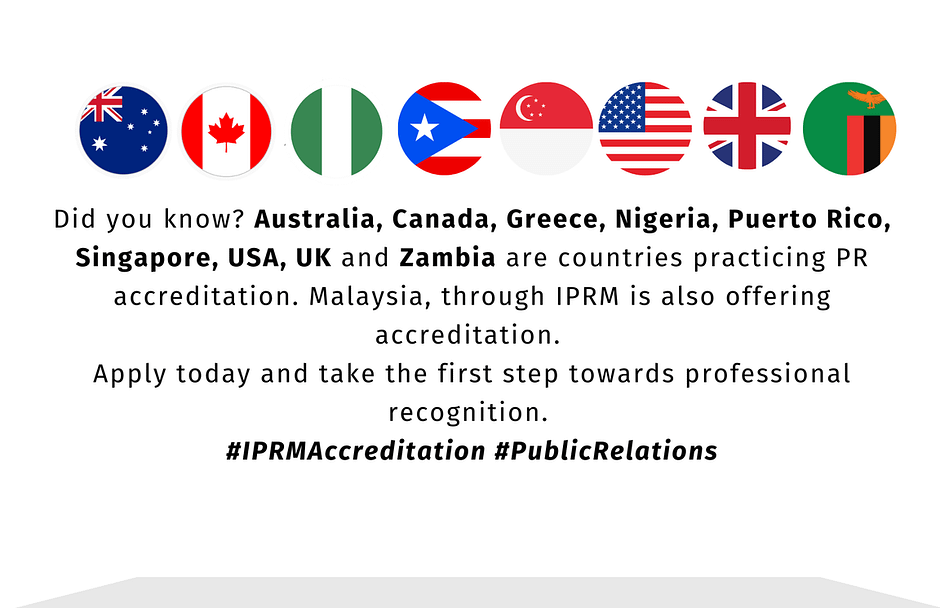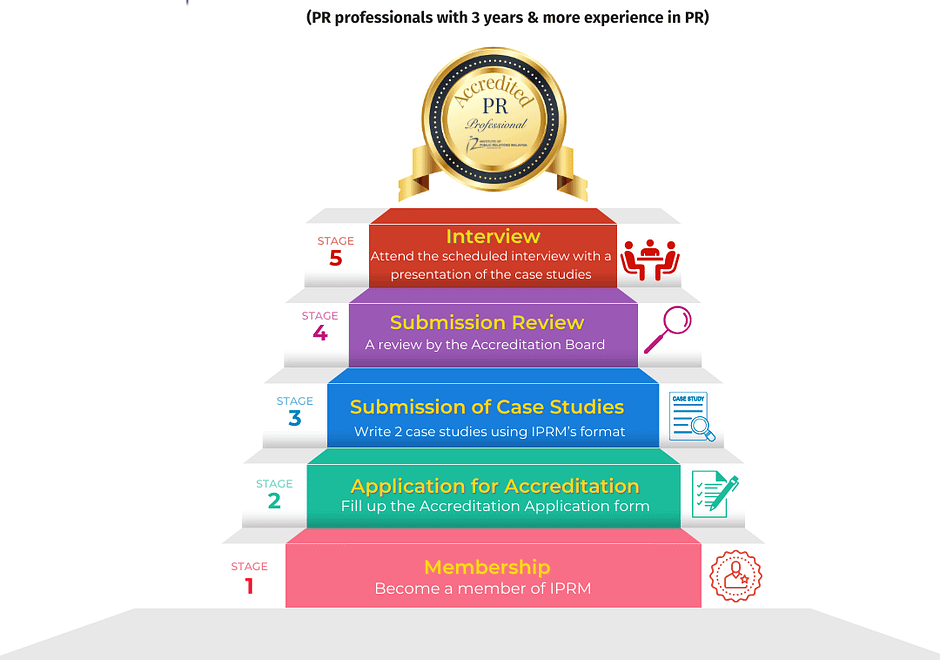IPRM Accreditation
Bridging Stakeholders, Driving Impact and Advancing Professional Excellence

Public relations practitioners who obtain the Accredited Public Relations (APR) title are expected to demonstrate a certain level of experience and knowledge and subscribe to shared learning within and outside the public relations fraternity. They are also dedicated to enhancing their profession through Continuing Professional Development (CPD) and Continuous Professional Education (CPE) programs.
As the national public relations association, IPRM approaches the accreditation of the profession as a platform to strengthen the professionalism of the practice and provide the recognition the profession deserves.
Benefits of Accreditation
Achieving accreditation sets you apart as a leader in the public relations field. It enhances your credibility and opens doors to new opportunities.
1. To recognise prominent and experienced public relations practitioners and allow them to obtain professional standing;
2. To raise the level of professionalism of the public relations practice;
3. To provide a formal certification endorsed by IPRM; and
4. Authorised to use the “APR” suffix in their designation.
Understanding Accreditation Process

Eligibility Criteria
Public relations or communication practitioners with at least 5+ years of experience;
A minimum of a Certificate / Diploma / BA / MA / PhD in Public Relations, Mass Communication, Strategic Communication, Corporate Communication, Integrated Marketing Communication, or other related disciplines, which will be reviewed at the discretion of the Accreditation Board; and/or
Holders of an IPRM Diploma or Certificate in Public Relations.

How to Apply?
How to Apply?
Fill up the Accreditation Application Form here. Only existing members are eligible to apply for accreditation. If you are not an existing member, you are required to submit for normal membership before applying for the accreditation. Alternatively, the Membership form can be submitted together with the Accreditation Form;
Fees
Accreditation Fee
RM300 (RM200 for Accreditation and RM100 for processing fee)
Normal Membership
RM300 (RM200 for Membership and RM100 for processing fee)
Case Studies
Upon submission of the application form, you are required to draft two case studies on any public relations or communication projects that you have undertaken based on the topics below and submit them to the Secretariat.
PR Practice Areas
- Media Relations
- Corporate Communication
- Financial PR – Investor Relations
- Government PR – Lobbying
- Public Affairs – Regulatory
- Issues Management
- Crisis Communication
- International PR
- Employee Communication
- Minority / Multicultural Affairs
- Change Management
- Stakeholder Management
- ESG / CSR
- Sponsorship / Corporate Philanthropy
- Integrated Marketing Communication
- Event Management
Case Study Format
- 1. Executive Summary
- 2. Background
- 3. Situation Analysis
- 4. Strategy Development and Values
- 5. Stakeholders
- 6. Messages
- 7. Implementation
- 8. Budget
- 9. Monitoring & Evaluation
- 10. Stewardship.
